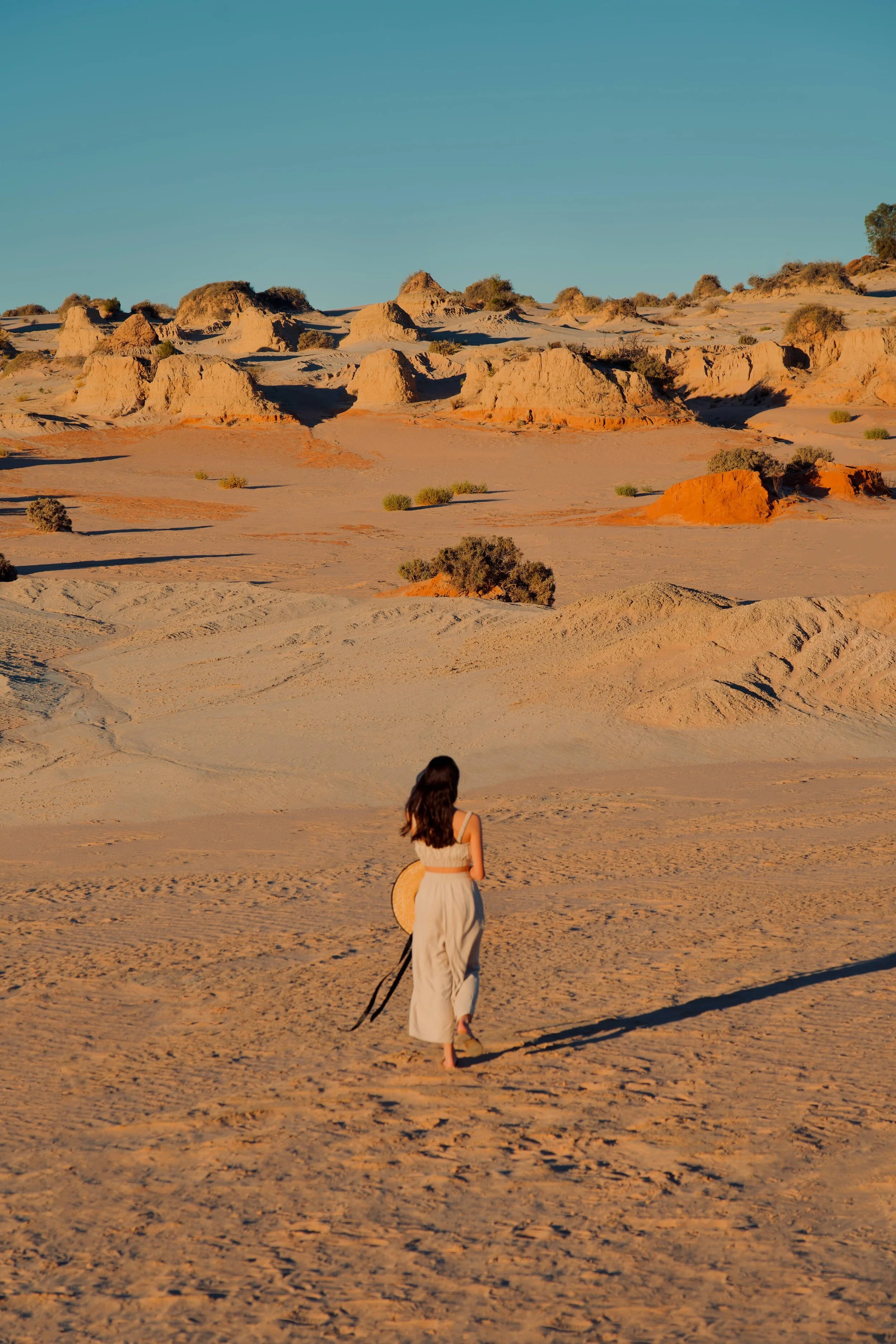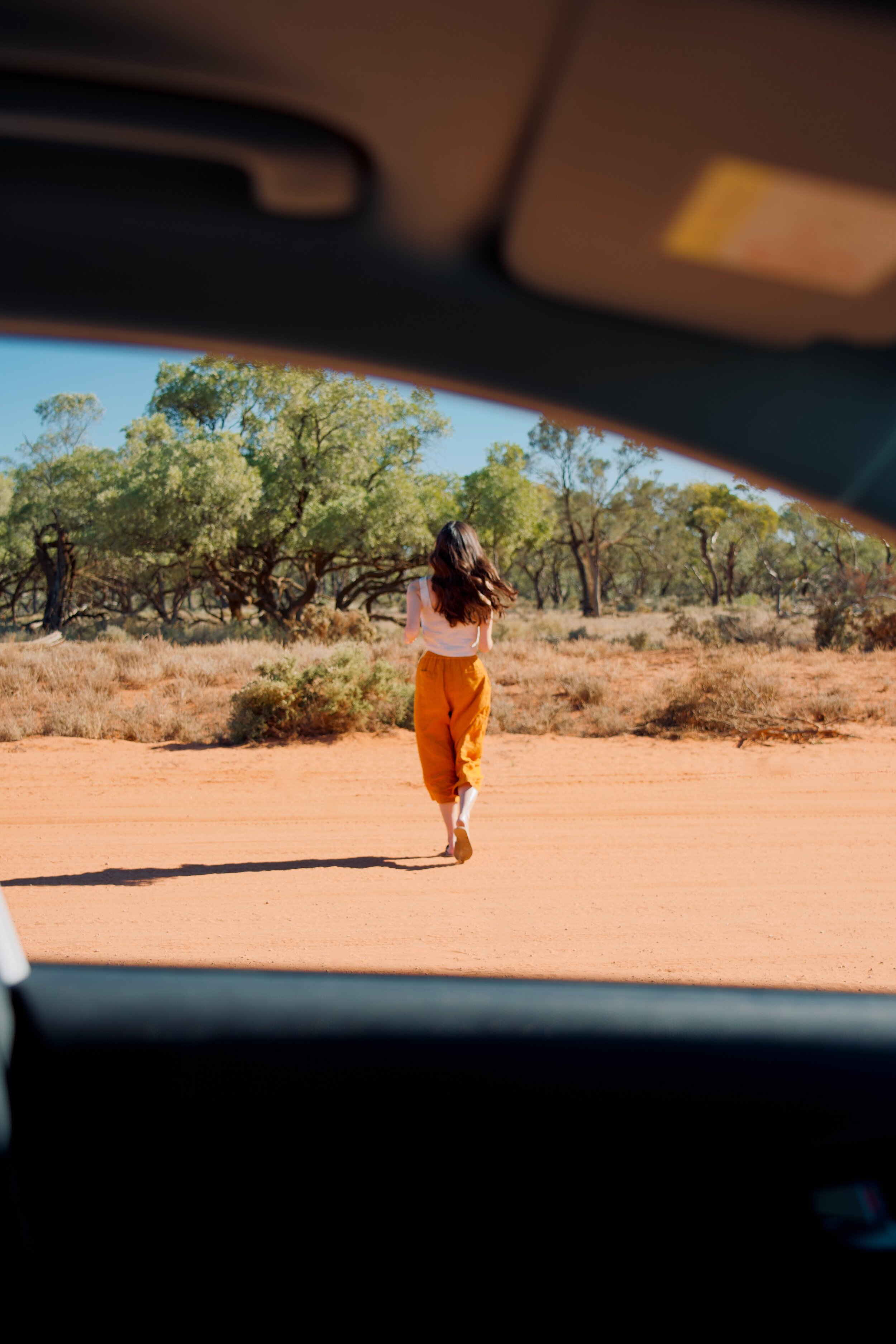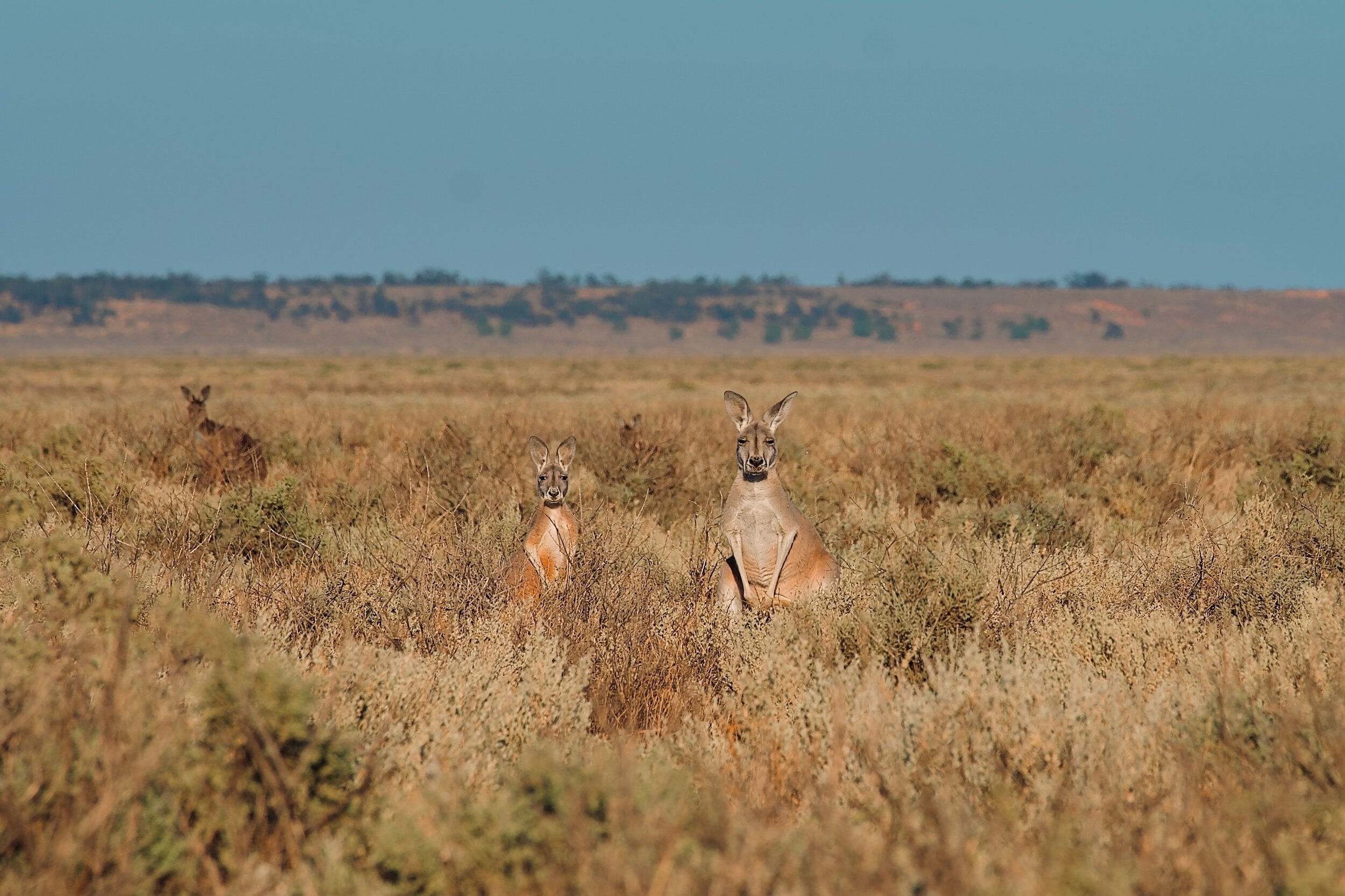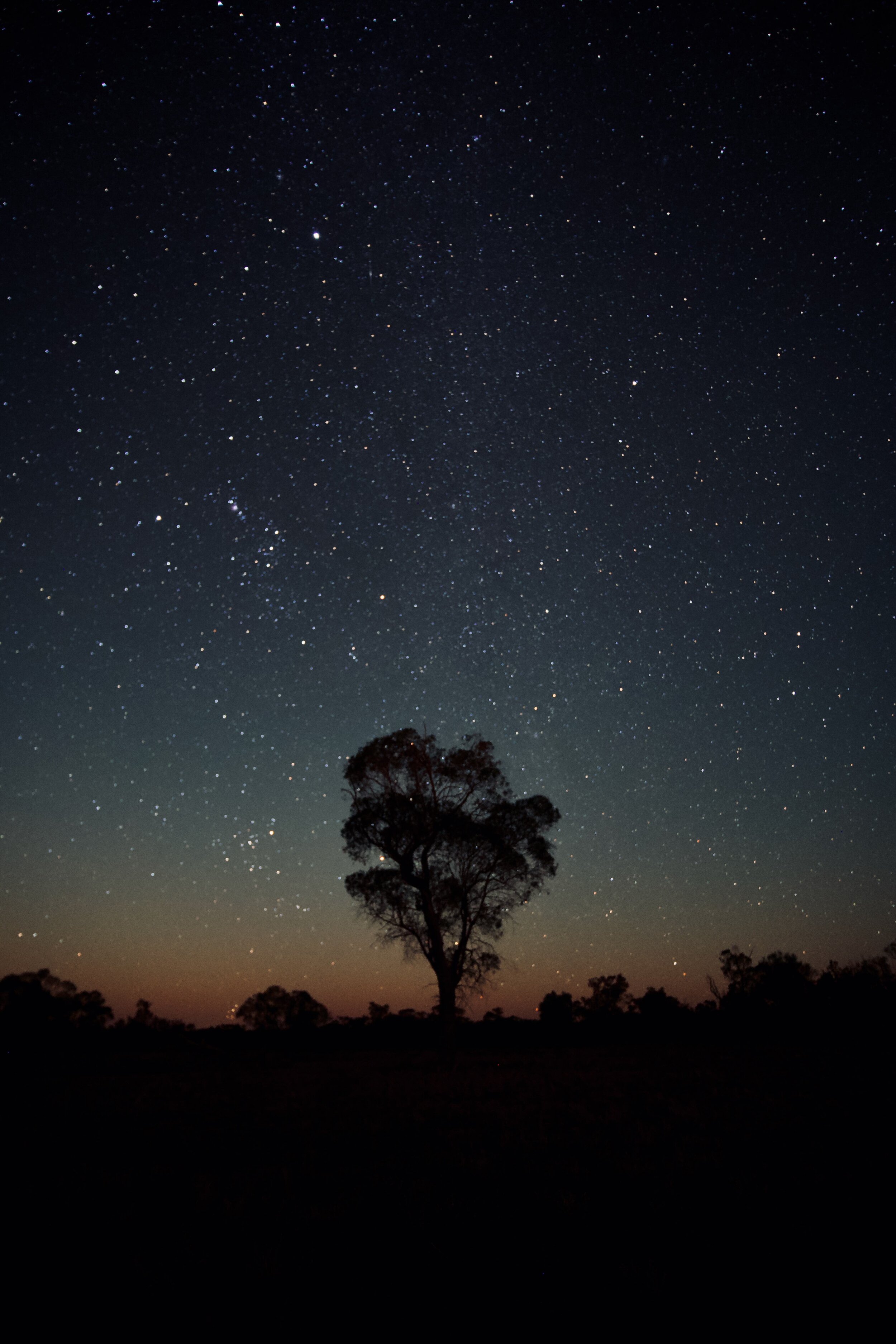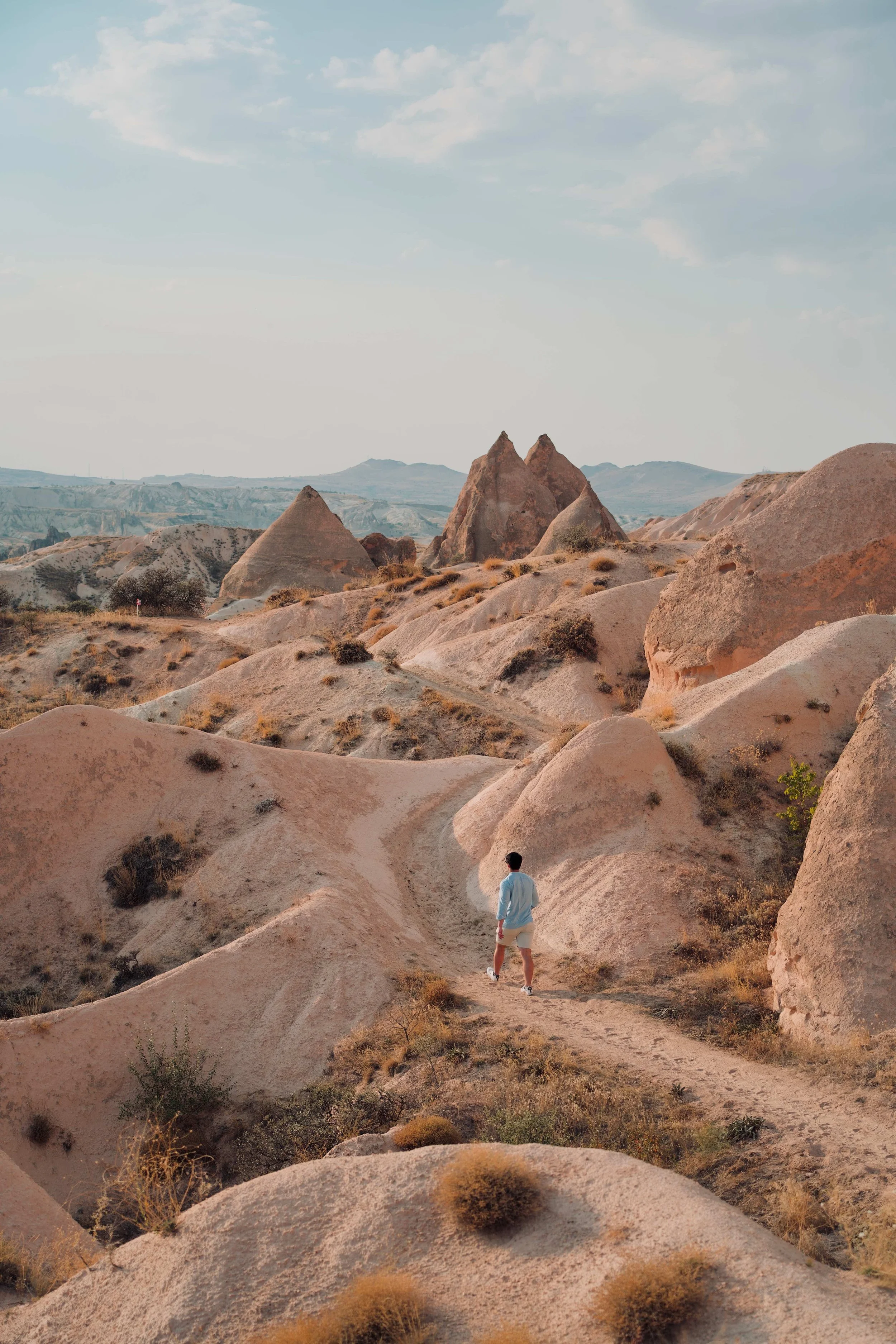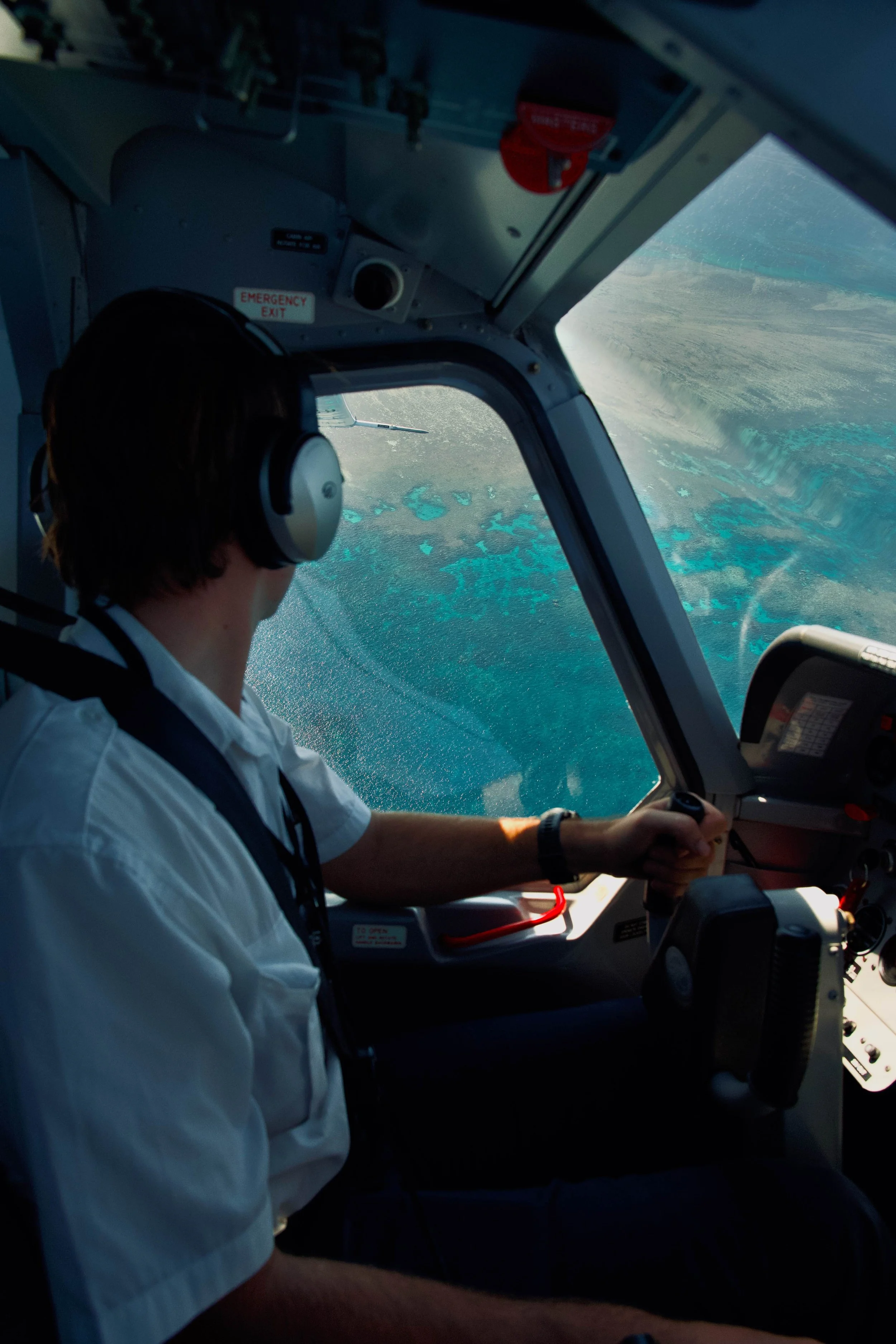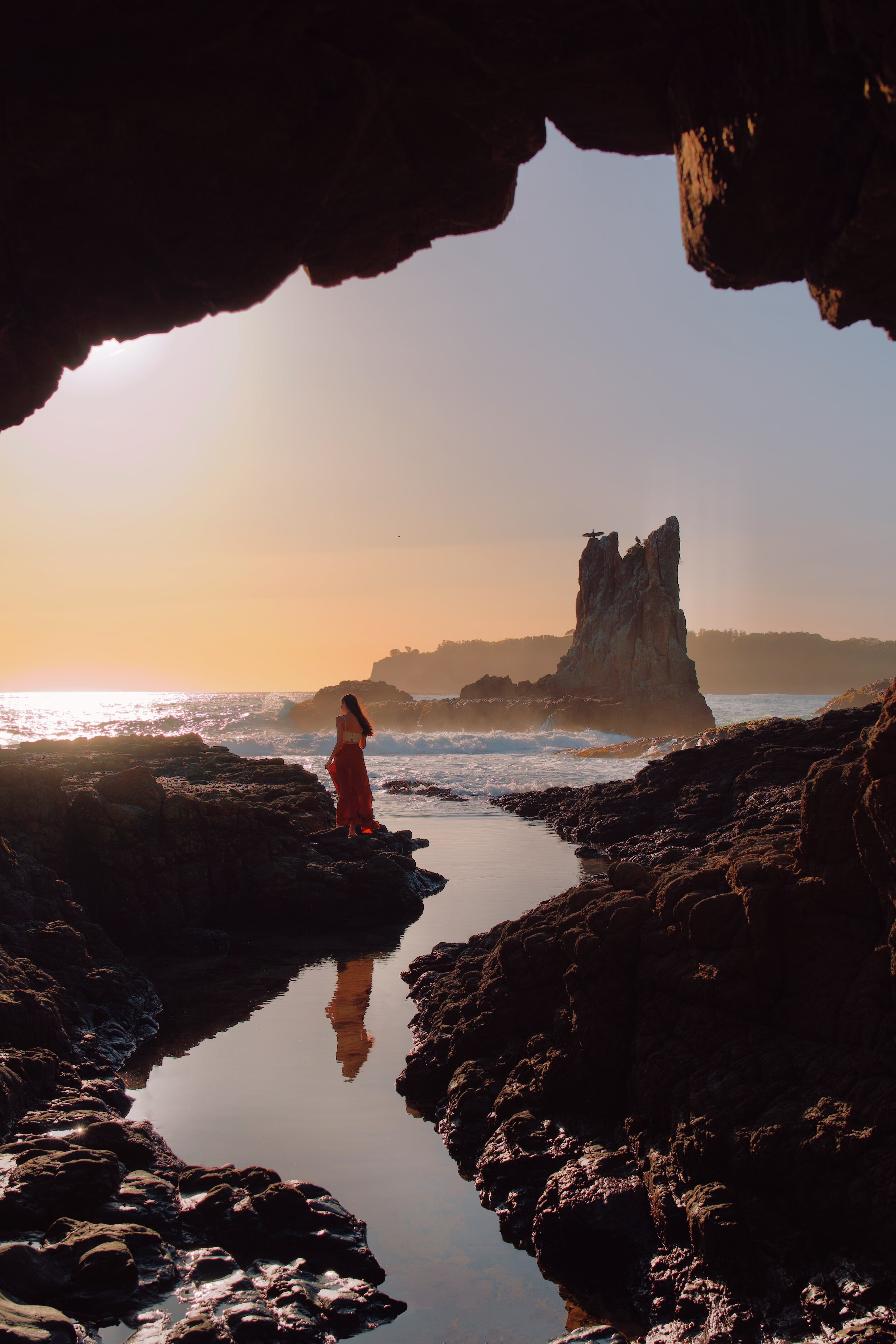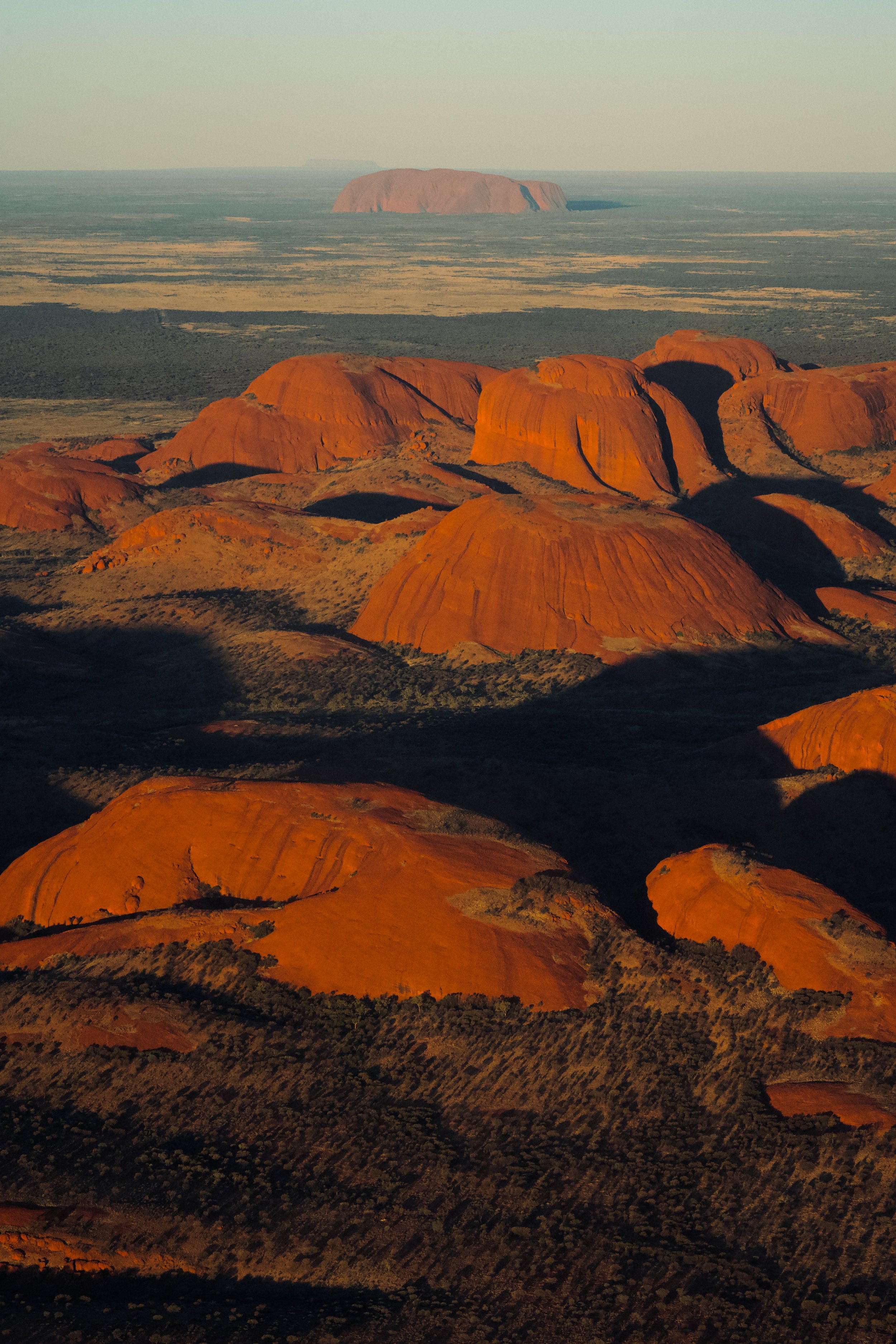Everything you need to know about visiting Mungo National Park
by ling and jace
‘Mungo National Park’ is on Paakantji, Ngyiampaa and Mutthi Mutthi land. We acknowledge and pay our respects to the Traditional Owners.
home / back to australia
First light over Mungo National Park from Red Top Lookout
When we first started travelling together, we quickly realised that our favourite places to visit were surreal natural landscapes. We started seeking them out and our routes became more and more remote. Eventually, we made plans to visit the ancient landscapes in the Willandra Lakes Region and drove to Lake Mungo.
Mungo National Park is 1000km from our home in Sydney so we decided to hire a car from Rentalcars.com. It took three days to get there, but we knew we had to experience it. The trip was filled with long roads, surreal landscapes and sunset warmth.
We’ve put together everything that you need to know about visiting, including accommodation options and the best things to do in Mungo National Park.
Sunset on the lunettes
Sunset tour in Mungo National Park
5 THINGS TO KNOW BEFORE VISITING MUNGO NATIONAL PARK
1. How to get to Mungo National Park
Mungo National Park is extremely remote—the closest town is over 100km away. There are two rural towns to access the national park from, and both are about 1.5hrs drive away:
Mildura - the closest town to Mungo National Park. People usually fly into Mildura airport and drive; or
Balranald - if you’re driving southwest from Sydney, you’ll be passing through Balranald on the way.
We decided to get there by taking a regional NSW road trip from Sydney. It’s about 11 hours’ drive each way, but we split it over three days, stopping overnight in Wagga Wagga and Balranald. We’ve put up our full itinerary from Sydney to Mungo National Park here.
There is an entry fee to the national park ($8 a day per vehicle) which can be paid at the Mungo Visitor Centre.
Roadside view in Mungo National Park
Roadside view into Mungo National Park
2. Road conditions & petrol
There are unsealed dirt roads for about an 80km radius around the accommodation in Mungo National Park. We recommend driving something suitable for off-road situations, especially given how remote the national park is and how infrequently other travellers will pass by. We hired a car from Rentalcars.com, which lets you compare prices across companies. We hired a Hyundai Kona all-wheel-drive which managed the roads well, although was still shaky at times.
There can be hundreds of kilometres between towns, so it’s a good idea to map out your route and plan petrol stops in advance.
3. Weather
Being the outback, there’s not a whole lot of shade around, so sun protection is a must—hat, sunscreen, sunglasses and water. But as soon as the sun sets, it gets very cold very quickly, so make sure you bring warm clothes for the night as well.
Also, it doesn’t look like the kind of place to get a lot of rain, but the roads inside Mungo National Park can be closed at the last minute due to flooding. It’s best to check the weather forecast before you go and call the Mungo Visitor Centre ahead of your drive to check.
4. Internet and mobile reception
There’s very limited internet and mobile reception in Mungo National Park. Fortunately, there’s not a lot of places to drive, so you’re not likely to get lost, but plan ahead by downloading some offline maps on Maps.me or Google Maps (we found Google more reliable).
5. When to visit Mungo National park
The best time to visit Mungo National Park is in either Autumn or Spring, when it’s not too hot. We decided to visit from late March-early April, and had clear skies and cool mornings and evenings. Lake Mungo is so expansive that it’s an incredible place for sunrises, sunsets and stargazing. We timed our trip so that we could see the full moon rise while we were there.
Accommodation at Mungo Lodge
Back deck of Mungo Lodge cabin
ACCOMMODATION IN MUNGO NATIONAL PARK
There are only a few accommodation options within Mungo National Park: the campsite, Shearer’s Quarters and Mungo Lodge. Another alternative would be to stay outside of the national park in either Mildura or Balranald, as day trips often run from these towns. A one-way drive from either of these towns is about 1.5 hours.
Camping
Camping in Mungo National Park is the cheapest option for accommodation.
The main campground caters for all kinds of camping—tent, caravan, trailer, etc—and has bathrooms, a barbeque area and tables. Showers and flushing toilets are located 5 minutes’ drive away at the Mungo Visitor Centre.
Booking in advance is required and can be done online.
MAP HERE
Shearer’s Quarters
The Mungo Shearer’s Quarters is an affordable way to stay in hostel-style heritage accomodation in Mungo National Park. It’s a self-contained block located right next to the Mungo Visitor Centre and at the start of the self-driving tour. It has communal showers and bathrooms, kitchen and dining areas, electricity, and parking.
There are only five rooms available, so booking ahead is essential and can be done online.
MAP HERE
Mungo Lodge
Mungo Lodge is the most expensive accomodation in Mungo National Park, but also the most comfortable. The lodges have private bathrooms and showers, television, minibar, air-conditioning, and a deck that backs directly onto the outback which we loved. There is also a great restaurant, but options are limited and pricey (but good value), and need to be booked in advance on the day to help the Lodge cater for numbers. If you’re staying at the Main Campground or in the Shearer’s Quarters, you’re welcome to eat here too.
Mungo Lodge runs several driving tours and scenic flights in the area. We really recommend you at least take the Sunset Tour while you’re visiting (more on that below). Again, you don’t need to stay with the Lodge to join the tours or flights. The Lodge also looks after a family of emus which you can feed, and can host a bonfire at night if you ask.
MAP HERE
Road across Mungo Lake to Red Top Lookout
Sunset on the lunettes, Mungo National Park
8 BEST THINGS TO DO IN MUNGO NATIONAL PARK
1. See the sunrise at Red Top Lookout
In some places we’ve visited, the natural landscape seems to continually change. Everything can be transformed throughout the day by things like wind and light. Mungo is one of those places, where the colours looked completely different every time we went out. The morning at Red Top Lookout was the dreamiest—changing from blue hour to a golden sunrise.
Red Top Lookout, along with many of the areas listed in this post, can be reached independently through the Mungo self-guided drive tour—a 70km road that loops around Lake Mungo.
The lookout is on the edge of the lake, around 15 minutes’ drive away from the campsite and lodge. The sun breaks the horizon right behind the rocks, so it’s the perfect place to start the day in Mungo National Park.
MAP HERE
View from Red Top Lookout at sunrise
Red Top Lookout platform
View from Red Top Lookout at sunrise
2. Watch the sunset from the ‘Walls of China’
This was our first sunset on the edge of Lake Mungo. Over thousands of years, the sand and clay on the Eastern side of the lake has been carved by the wind and rain, revealing unique rock formations known as Mungo’s ‘Walls of China’. This area of the lake is also called the Mungo lunette for the high dune curved in the shape of a crescent moon around the dried lake bed.
There is a viewing platform and short boardwalk in front of the walls that you can drive to. We’d recommend visiting at sunset and watching the colours light up in the rocks—late in the day, each of the sediment layers become more and more visible.
MAP HERE
It’s only possible to access this part of Mungo Lake and walk across the lunette with a professional guide. To get passed the viewing platform and onto the rocks themselves, we took Mungo Lodge’s Sunset Tour. We actually took the tour twice and new things had already appeared—recent emu prints in the sand, and hints of an ancient fire in the clay where the sand had been blown away.
3. Climb sand dunes
Usually, there is access to an expansive area of mobile sand dunes on the self driving tour, however the section of road was closed when we visited. Check the latest alerts on the NSW National Parks and Wildlife Service for road closures and hazards before visiting.
Alternatively, huge sand dunes can also be seen behind the Walls of China, which we visited with a guide. The most beautiful time to see the dunes is at sunset, when everything glows red.
Unfortunately the area has been permanently changed as a result of farming during the last century. The changes have massively sped up erosion, and the sand dunes are now moving 1.5m towards Sydney every year.
Sand dunes in Mungo National Park at sunset
Red glow on the sand dunes in Mungo National Park
Eroded dunes in Mungo National Park
4. See the full moon rise and set
On our first morning in Mungo National Park, we drove out across the huge, dry lake. The sun started rising over the edge on one side, and the moon was still setting on the other. It was so dreamy to see them both in the sky at once, suspended in an orange glow.
Because Lake Mungo is so expansive, you can catch the moon on the horizon from nearly any angle, making it look huge against the lunettes, kangaroos and shrubs. Mungo Lookout is a good vantage point for a clear view of the moon rise over the lake bed. Otherwise, we’d recommend using the SkyView app to find out when and where the moon will rise if you want to capture it from the Walls of China viewing platform.
Moon set and sun rise at Mungo National Park
Moon set at Mungo National Park
5. Find wildlife
It was interesting to see what manages to live and grow in the salt and clay bed of Lake Mungo, which dried up around 14,000 years ago. On the trip, we saw kangaroos, emus and goats around Mungo National Park.
The easiest way to find kangaroos is to drive across the lake in the early morning, just after sunrise or just before sunset. The kangaroos are usually in the shrubs and not too far from the road at those times of day, so drive carefully. Emus are a bit more far and few between than kangaroos, but we were lucky enough to spot large groups of emus in the late afternoon around the Red Top Lookout.
Kangaroos in Mungo National Park
Emus in Mungo National Park near Red Top Lookout
6. Walks in Mungo National Park
There are quite a few walks in Mungo National Park. As it usually gets quite hot and dry during the day, we’d recommend taking walking tracks early in the morning or late afternoon, whenever there is less sun exposure, and bringing a hat, sunscreen, sunglasses and plenty of water.
These walks are great for wildlife spotting and experiencing the natural landscape on foot. The Zanci Pastoral Heritage Loop is the longest and most historical, taking you to some historical sheep shearing farms, and starts at the Mungo Visitor Centre.
7. Take in the view from Mungo Lookout
Mungo Lookout is a roadside view right across the lake. There was something so refreshing about seeing the whole lake bed—not one particular thing, but just how vast and different the landscape was compared to anything we had ever driven to. At night, Mungo Lookout is also a good vantage point for a clear view of the moon rise above the horizon.
MAP HERE
View from Mungo Lookout
8. Stargaze
The moon started rising later and later each night, which gave us time to see the sky while it was still dark. On a clear night, Mungo National Park is the perfect place to see the stars. We went out into a field behind our cabin at Mungo Lodge and caught it under a clear line of the Milky Way.
Stars above Mungo Lodge
Milky Way in outback NSW
View of the stars behind Mungo Lodge
Night view from Red Top Lookout
RECENT POSTS
PIN IT
Find us on Instagram

